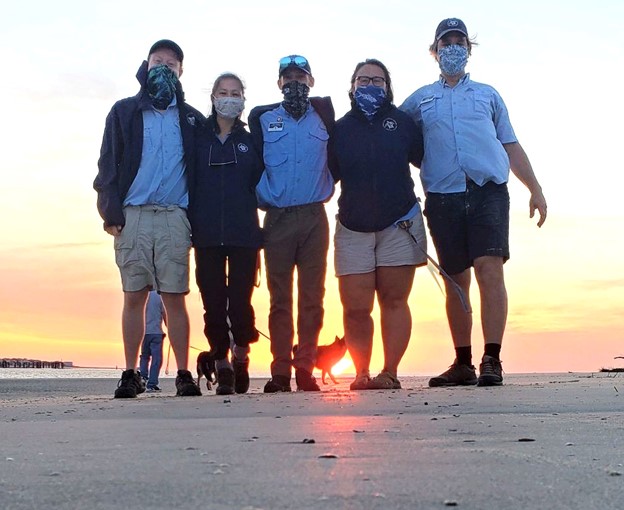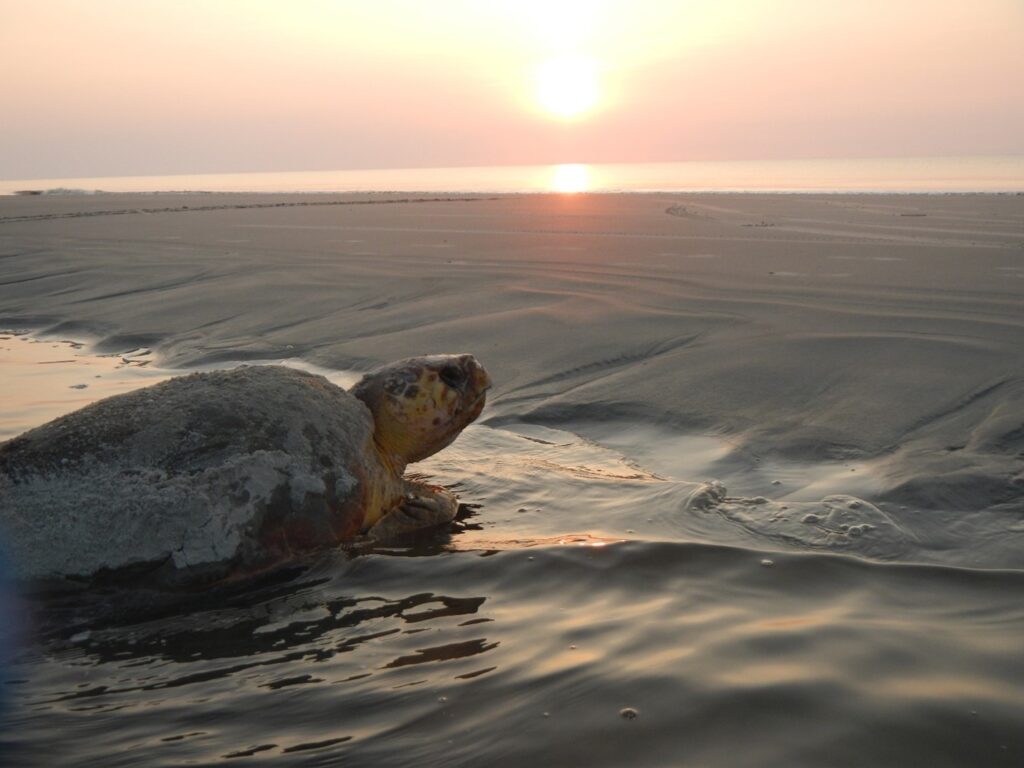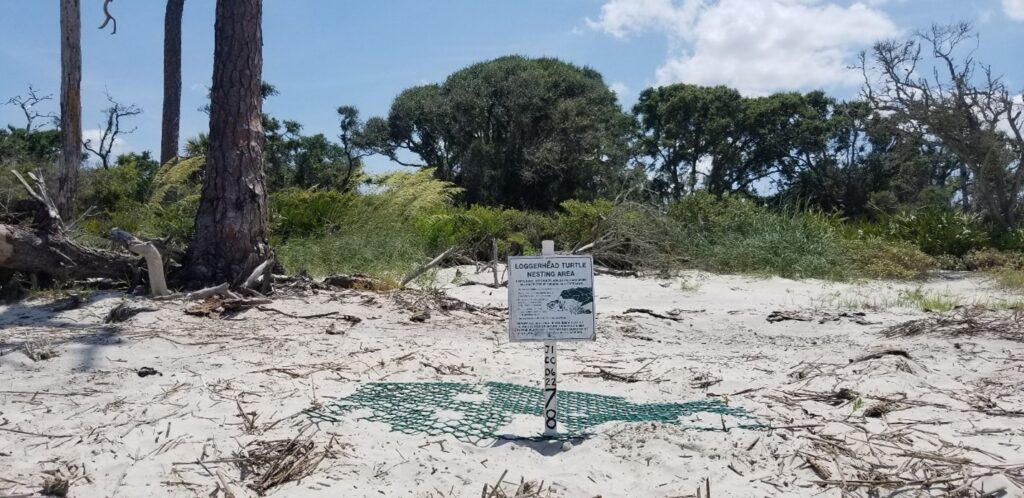By Davide Zailo, Research Specialist, and Dr. Tom Radzio, Research Ecologist
Here on Jekyll Island, the unofficial start of summer is heralded by the arrival of nesting loggerhead sea turtles. These behemoths of the ocean can reach over 300 pounds and lay up to seven nests of 100+ eggs each in a single season. Some turtles will place all their nests on Jekyll Island whereas others will distribute them among multiple islands. Nesting females are at least 25 years old and very important to the survival of their species. Counting and studying nests allows us to estimate numbers of adult females and determine whether our loggerhead population is increasing, stable, or declining. The long-term data suggest a slowly increasing population, rebounding from dangerous lows at the turn of the century.
Monitoring loggerhead nesting and performing conservation-oriented studies is the responsibility of the JIA Georgia Sea Turtle Center Research Team, which includes two staff members and a talented and dedicated group of AmeriCorps Service Members. This summer, the research will include a new component, work to better understand how nest temperature influences egg development and hatchling characteristics, such as size. After hitting the books and training hard for two months, AmeriCorps Service Members start patrolling the beach in early May. This is an exciting time as the anticipation of finding the first nest of the season builds day by day!
From May to July, the GSTC Research Team patrols Jekyll Island’s beaches throughout the night to encounter as many nesting loggerhead sea turtles as possible. These ‘Night Patrols’ allow the team to study females directly, collect nest data, and provide unforgettable experiences for guests in our nighttime Education programs. To ensure that nesting is not interrupted, researchers carefully watch emerging turtles from a distance until they start to lay eggs. At that point, females enter a ‘nesting trance,’ which allows them to be safely examined.
At 6:00 am, a smaller team takes over to perform daily morning surveys. These ‘Dawn Patrols’ cover all of Jekyll Island’s beaches for a thorough accounting of nests laid during the previous night. Dawn Patrol crews also perform a daily check of each nest to document its progress throughout incubation, a process that requires about 50-65 days, depending on nest temperature. Five days after hatchlings emerge, the nest is carefully excavated to assess egg hatching success and collect other information. In addition to valuable data, excavations provide wonderful opportunities for public engagement, including the chance to see a live hatchling.
These efforts would not be possible without your continued interest and support. We thank you as we strive to learn more about our native wildlife and build towards a more sustainable future. Here’s to a happy and productive turtle nesting season!






